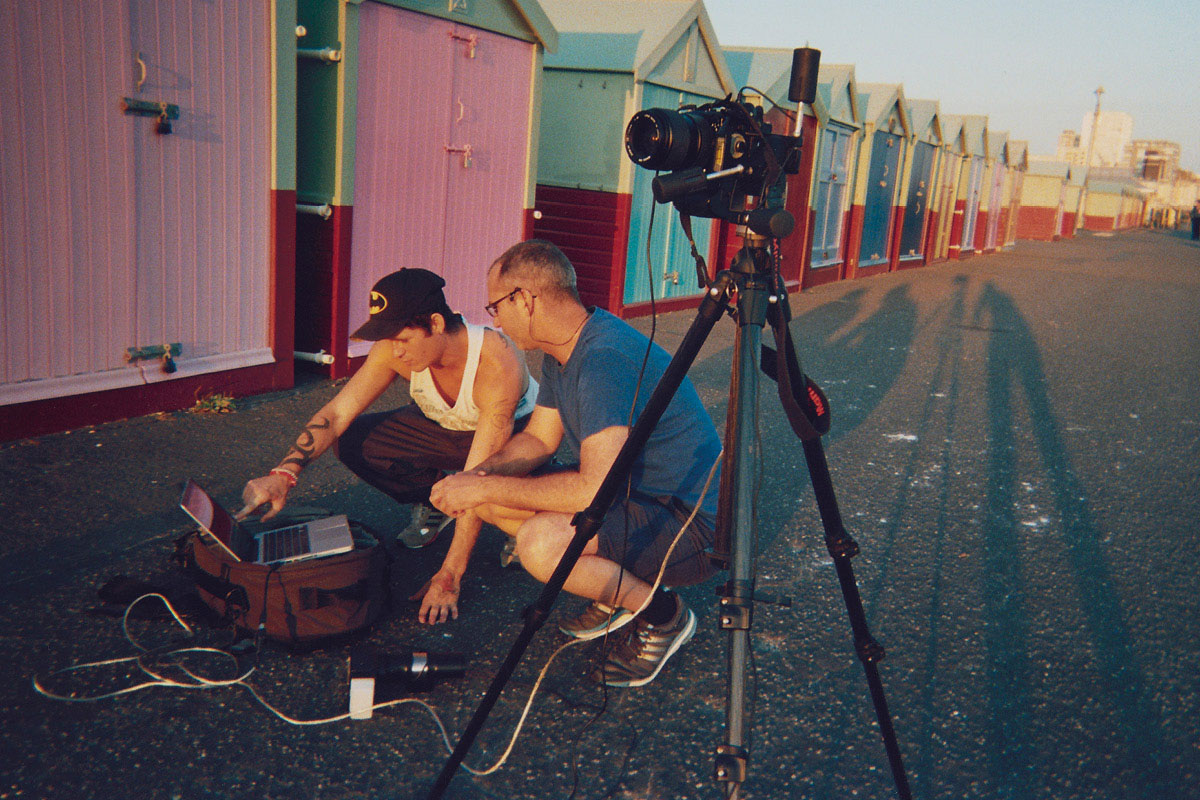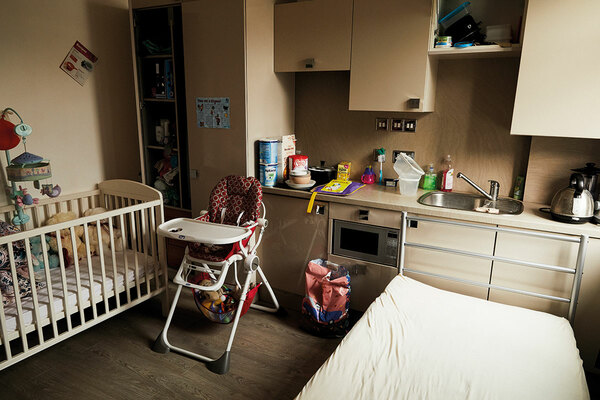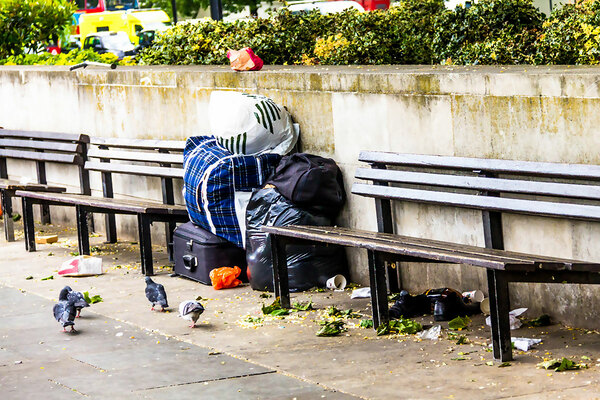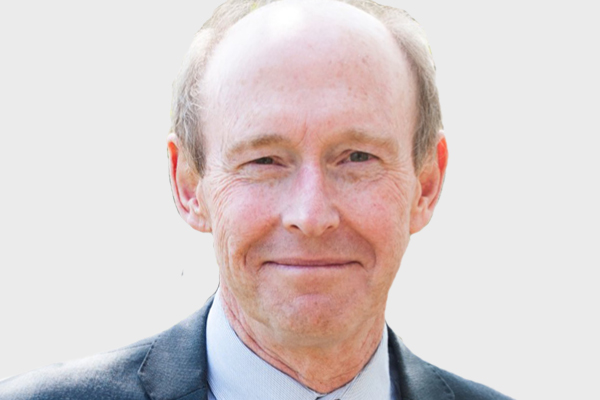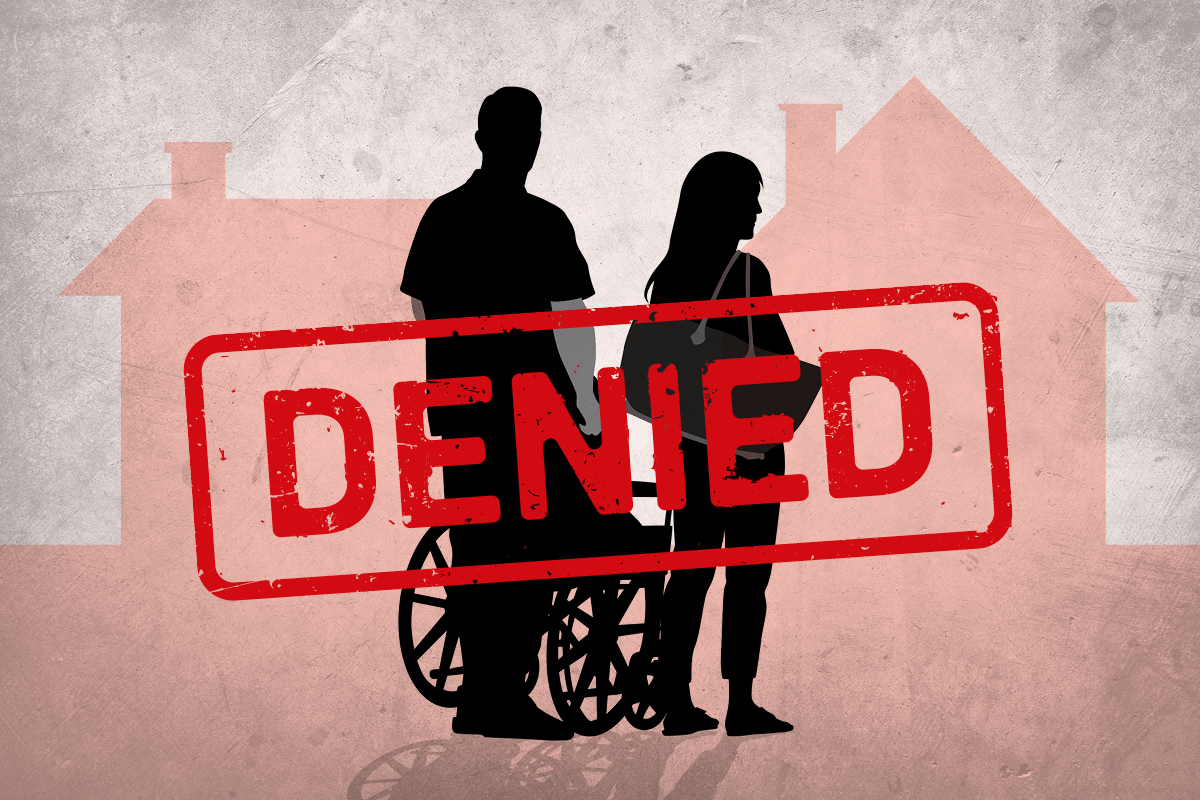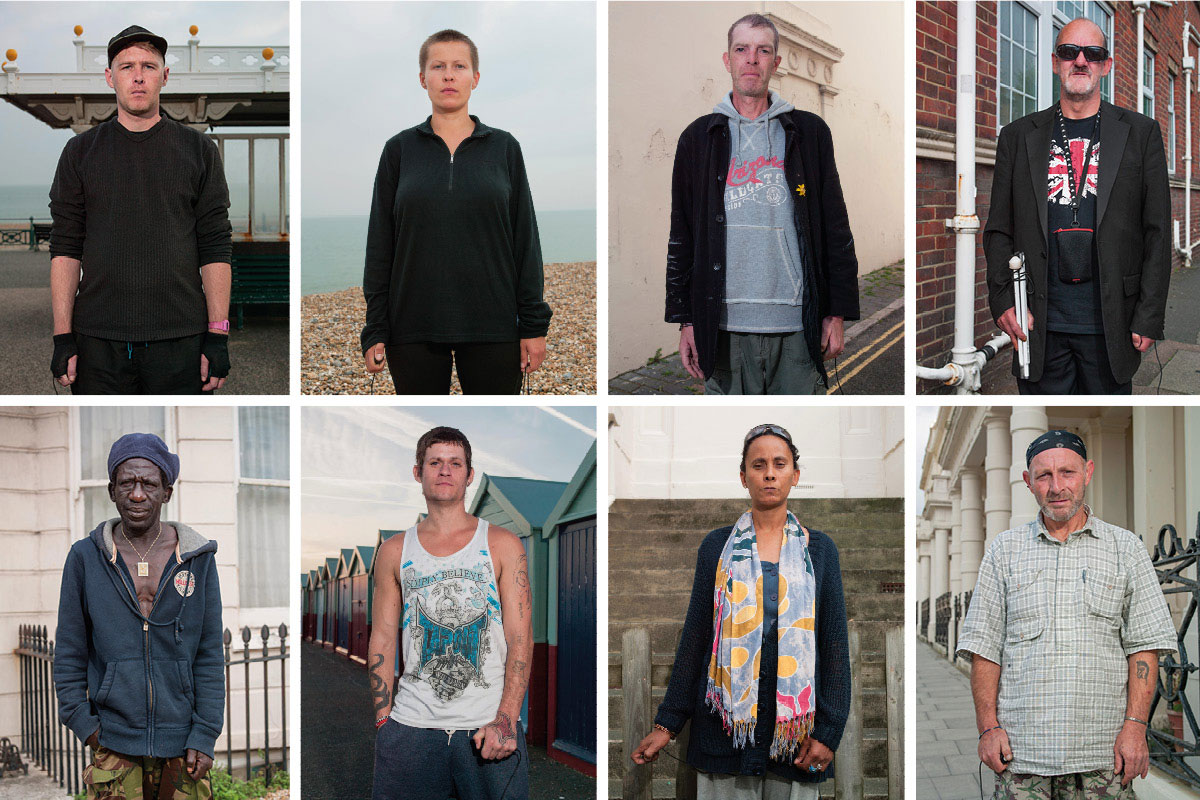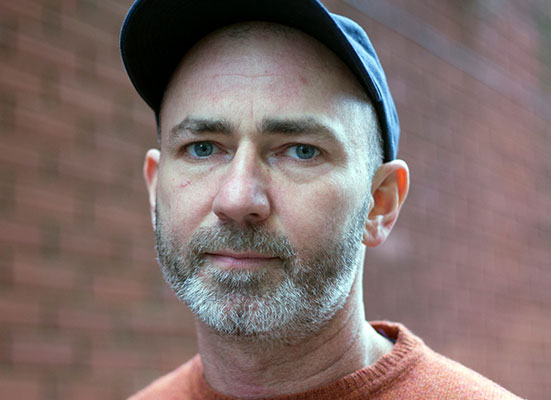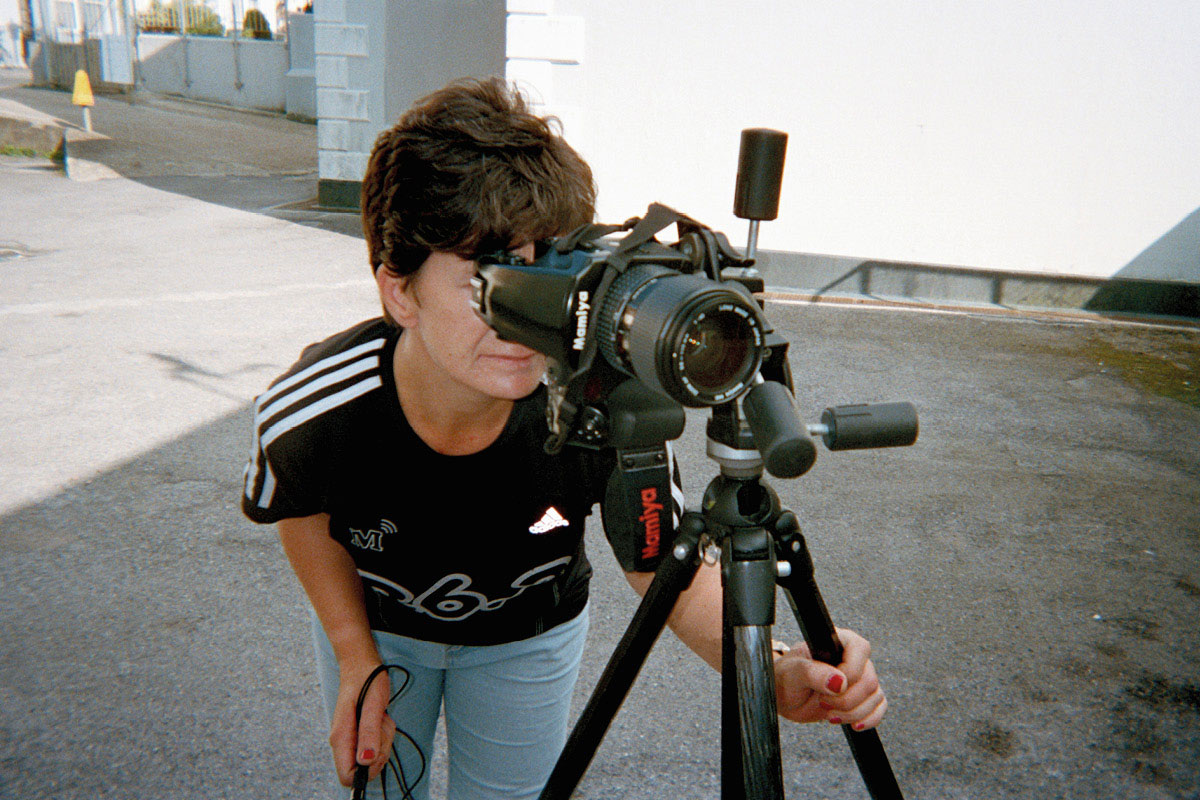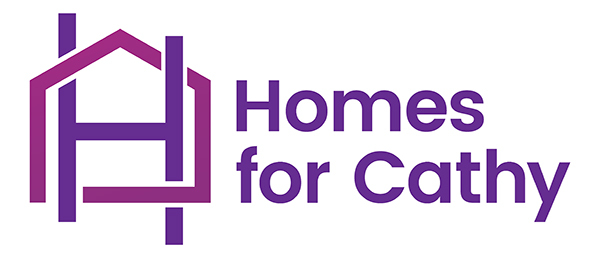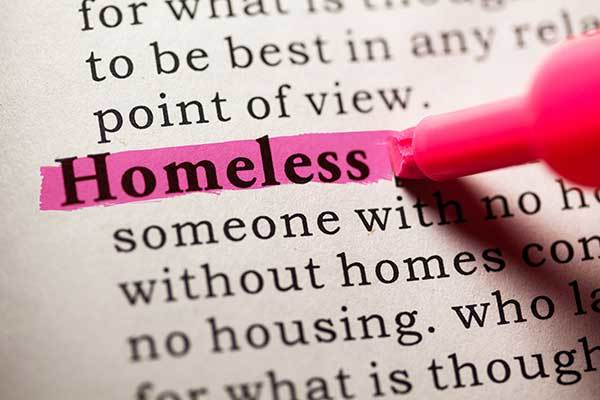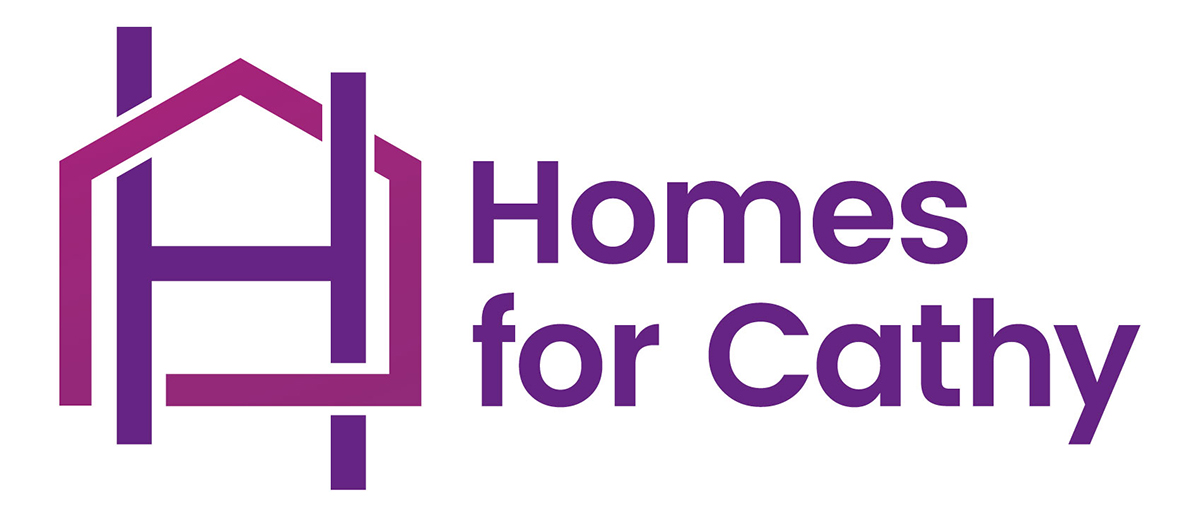‘Computer says no’: how a new exhibition is exposing the bureaucracy faced by homeless people
Anthony Luvera’s new art exhibition exposes the bureaucratic nightmare faced by many homeless people. He tells Martin Hilditch what needs to change
As an artist you have collaborated with many individuals who have experienced homelessness in towns and cities across the UK over the past 18 years. How would you describe your work and how has your experience fed into your latest exhibition?
The way I work is described as ‘socially engaged’. I spend long periods of time getting to know the staff and individuals associated with support services.
First I volunteer with the organisation and then later invite individuals to create photographs, sound recordings and other works that speak to the things they are interested in as well as the systems and services that shape their lives.
I began working in Brighton in 2012 with two services provided by Brighton Housing Trust: the First Base Day Centre and the Phase One hostel. I collaborated with over 50 people, inviting them to take cameras and digital sound recorders to document their experiences, as well as use professional camera equipment to create a self-portrait for my ongoing ‘Assisted Self-Portraits’ series.
To make an ‘Assisted Self-Portrait’, I meet with a participant regularly in places that are significant to them to teach them how to use the camera equipment tethered to a laptop.
Your exhibition at Foyles consists of two bodies of work. ‘Frequently Asked Questions’, in particular, looks at the way service providers interact with individuals who are homeless and trying to navigate the system. Where did the idea come from and what were you trying to achieve with the work?
In 2014, when preparing for an exhibition of this work in Brighton, which is called ‘Assembly’, I was keen to include information in the gallery about support available to people experiencing homelessness or at risk of becoming homeless.
I spent time gathering all kinds of information produced by charities, housing trusts, local authorities and other services. When reviewing this material, what was striking was how much of it seemed to primarily serve the marketing interests of the organisation paying for it rather than providing useful answers to practical questions.
So, in conversation with a participant, Gerald Mclaverty, we decided to approach compiling this information in a different way. The idea was to gather information about the support and services available to a homeless person but through a direct request from someone experiencing homelessness and in need of answers.
We sent emails to 44 local authorities around the UK asking several questions about a homeless individual’s right to access basic living provisions, such as shelter, personal safety, health, food and communication. What came back was mostly automated replies that ignored the sender – Gerald – and the urgency of his questions. Only four local authorities attempted to provide answers. This seemed to say as much about the state of legislated support services as anything else.
Throughout 2017, Gerald and I undertook further research with a new round of enquiries, which resulted in a display at Tate Liverpool as part of the State of the Nation programme with the Museum of Homelessness. We sent a second email to 61 councils and received a similarly alarming response. Ninety-two per cent of the local authorities gave no answers to the questions and 19 councils promised a response within a certain timeframe – ranging from 24 hours to 28 days – with only one honouring their response time pledge.
Then, considering the introduction of the Homelessness Reduction Act 2017, which legally bound local authorities with new duties in relation to homeless individuals, we thought it was an important moment to conduct further questioning of councils in 2019, to see if the act had resulted in an discernible change in their behaviour – in effect putting their performance under the microscope. ‘Taking Place’ at the Gallery at Foyles presents an overview of the five years of research underpinning Frequently Asked Questions, alongside the photographic work from Assembly.
What did Frequently Asked Questions teach you about the way services operate for homeless people?
There was a wide disparity in the way local authorities dealt with Gerald’s enquiry. This indicates a lot about the way specific councils treat individual enquiries from a person experiencing homelessness and how this aligns
or is out of step with the stated intentions or aims of the authority.
In 2019, one of the things that occurred for the first time was some of the responses that came back from the councils offered a telephone call or a meeting. This did not happen at all in 2014 or 2017, and I’m sure it can be attributed to the introduction of the Homelessness Reduction Act. This is positive! However, this only accounts for 23% of the 110 local authorities contacted.
The Assisted Self-Portrait series: Assisted Self-Portrait of (left to right) Gerald Mclaverty, Kristel Aasjoe, Ady Baldwin, Fred Clarke, Momodou Njie, Ben Evans, Yolanda Bath and Mark Tomlinson from ‘Assembly’ by Anthony Luvera (click to view larger image)
Did the responses Gerald’s questions received surprise you? If so, why?
Overall I find the responses to Gerald’s questions alarming. The fact that an individual reaching out to the contact listed on a local authority’s website for housing and homelessness enquiries can be treated with such apparent disregard in so many instances is abominable.
When you read through the email correspondence for each of the survey years, there are a number of elements that stand out. For example, although the enquiry was sent to homelessness and housing support listed on council websites, in 2017 the responses came back from several seemingly unrelated and often quite bizarre sounding teams and departments, including: law and governance services, performance and intelligence, finance, and transformation services.
One of the things that caught me by surprise in the 2019 round of emails was how Hull answered the questions. The beginning of Gerald’s enquiry simply stated, ‘I’m homeless and I have no money, please answer the following questions…’ In answer to the question, ‘Where can I get clothes, footwear and a blanket?’, the housing options officer replied, ‘Shops’. The answers provided in their email were so flippant and unsympathetic that at times they appear cruel.
Frequently Asked Questions is less about finger-waving at bad practice than it is an attempt to point out that homelessness is a symptom of structural problems, which are often perpetuated by the systems that are ostensibly in place to ameliorate them.
There is a lot to be learned from the information Frequently Asked Questions presents in how local authorities can learn from each other. I’m sure homelessness and housing departments of local authorities operate under difficult circumstances at times. One of the reasons the email correspondence is included in the exhibition is so that the audience can see the range of replies and see that there are models of good practice, just as much as there examples of not so good practice.
Our core readership work for councils and housing associations. What learning do you think there is for them from Frequently Asked Questions? How would you like to see things change?
One of the things Frequently Asked Questions has taught me is that there appears to be a wide disparity in the practices enacted by local authorities in relation to not only how the housing and homelessness support services communicate with people experiencing homelessness, but in how this communication does or does not demonstrate a culture of care. Some of the local authorities appear to operate with what could be seen as excellent examples of best practice, while others are far from this.
Frequently Asked Questions provides a picture of how support services both help and hinder people, and gives an insight into the challenges and realities faced by the most marginalised individuals in society as they attempt to access systems of care. I hope the work can point out ways for local authorities to align areas of best practice and work towards more person-centred ways of working that truly put people’s needs first.
Anthony Luvera
What are the impact on people’s mental health of the type of bureaucratic exchanges that Frequently Asked Questions highlights?
As many people reading this may know, being subject to the industry of housing and homelessness support services can often be a confusing experience of intrusive appointments and being signposted towards sermonising advice that can leave the individual feeling powerless in their ability to express and access the rights most people take for granted.
To reach out for assistance takes courage. When you’re in this position, to be knocked back can have serious consequences on an individual’s health and well-being.
What lessons does Assembly hold in terms of the importance of giving people control of their own stories? The promotional material for the exhibition says it “upends” the traditional photography process – why was this important and what learning might there be for organisations such as homelessness charities in terms of the way they present their messaging?
Photographs convey meaning. They hold a great deal of power in relation to how they represent people who are marginalised or overly spoken for, especially when these images are anchored within the messaging of organisations or charities that have vested interests in fundraising and income generation.
Throughout time people experiencing homelessness or those living in poor housing conditions have been depicted in ways that often present individuals as being caught in a circumstance of their own making. Often these kinds of images are accompanied with a biographical story about the difficulties the individual has faced, which overtly or indirectly affirms that to be homeless is a consequence of the individual rather than a systemic issue of the way our society is organised.
The simple act of involving the individual in decisions related to the creation of their representation, and even having a final say over which images of or by them should be used, veers away from traditional photography processes – which I hope presents a more nuanced view on the experience of homelessness.
Documentation of the making of the Assisted Self-Portrait of Odette Antoniou
What have you learned personally from the bodies of work that make up the Taking Place exhibition? How have they changed you as an artist?
Although I’ve been working with people who have experienced homelessness for a long period of time, each project I create and every person I meet challenges my preconceptions about the experience of being homeless and the ways the systems and services are set up to enable or support people to improve their well-being.
Frequently Asked Questions has taught me that the tools in my kit as an artist need to continue to develop and grow, to keep speaking out about the way homelessness is experienced, stigmatised and even discriminated against. Showing Taking Place at the Gallery at Foyles has enabled my work to be seen by a wide range of people, and I hope this exhibition shifts their views on homelessness, to take stock of how we can all contribute to a culture shift that rethinks how we support the most vulnerable people in our society.”
The Taking Place exhibition is on display at Foyles, 107 Charing Cross Road, London, until Saturday 29 February 2020. It will also be part of ‘Taking Place: a day of talks on homelessness and housing justice’ at the Auditorium at Foyles on Thursday 27 February 2020, 9.30am to 5.30pm.
Anthony Luvera will be discussing his work at the Homes for Cathy annual conference on 23 March at the Congress Centre, London WC1. To book tickets visit www.insidehousing.co.uk/homesforcathy.
Homes for Cathy Annual Conference
Inside Housing is pleased to join forces with Homes for Cathy to deliver the third edition of the Homes for Cathy Annual Conference, taking place on 23 March 2020 at the Congress Centre, London.
Supported by the Chartered Institute of Housing and Crisis, the conference will unite leaders and practitioners from housing associations, local authorities and charities to share real examples of the work being done to end homelessness. The event provides a platform for informed debate and discussion, examination and exploration around the good practices being used in the sector.
Homes for Cathy is a group of housing associations that were formed in the Cathy Come Home era. They came together in 2016 to mark the 50th anniversary of Cathy Come Home and to highlight the continuing needs of homeless people.
The Homes for Cathy group has been organising a range of local and national events over the past three years, with the aim of raising awareness of the needs of homeless people and working on strategies to end homelessness.
All surplus from the conference will go to the Homes for Cathy group to support its work bringing together housing associations, homelessness charities and local authorities to end homelessness.
At a glance: Homelessness Reduction Act 2017
The Homelessness Reduction Act 2017 came into force in England on 3 April 2018.
The key measures:
- An extension of the period ‘threatened with homelessness’ from 28 to 56 days – this means a person is treated as being threatened with homelessness if it is likely they will become homeless within 56 days
- A duty to prevent homelessness for all eligible applicants threatened with homelessness, regardless of priority need
- A duty to relieve homelessness for all eligible homeless applicants, regardless of priority need
- A duty to refer – public services will need to notify a local authority if they come into contact with someone they think may be homeless or at risk of becoming homeless
- A duty for councils to provide advisory services on homelessness, preventing homelessness and people’s rights free of charge
- A duty to access all applicants' cases and agree a personalised plan
The nine Homes for Cathy commitments
The Homes for Cathy group of housing associations, working with housing charity Crisis, is asking its members to sign up to nine commitments to tackle homelessness:
They are:
- To contribute to the development and execution of local authority homelessness strategies
- To operate flexible allocations and eligibility polices which allow individual applicants’ unique sets of circumstances and housing histories to be considered
- To offer constructive solutions to applicants who aren’t deemed eligible for an offer of a home
- To not make homeless any tenant seeking to prevent their homelessness (as defined in the Crisis plan)
- To commit to meeting the needs of vulnerable tenant groups
- To work in partnership to provide a range of affordable housing options which meet the needs of all homeless people in their local communities
- To ensure that properties offered to homeless people are ready to move into
- To contribute to ending migrant homelessness in the areas housing associations operate
- To lobby, challenge and inspire others to support ending homelessness
